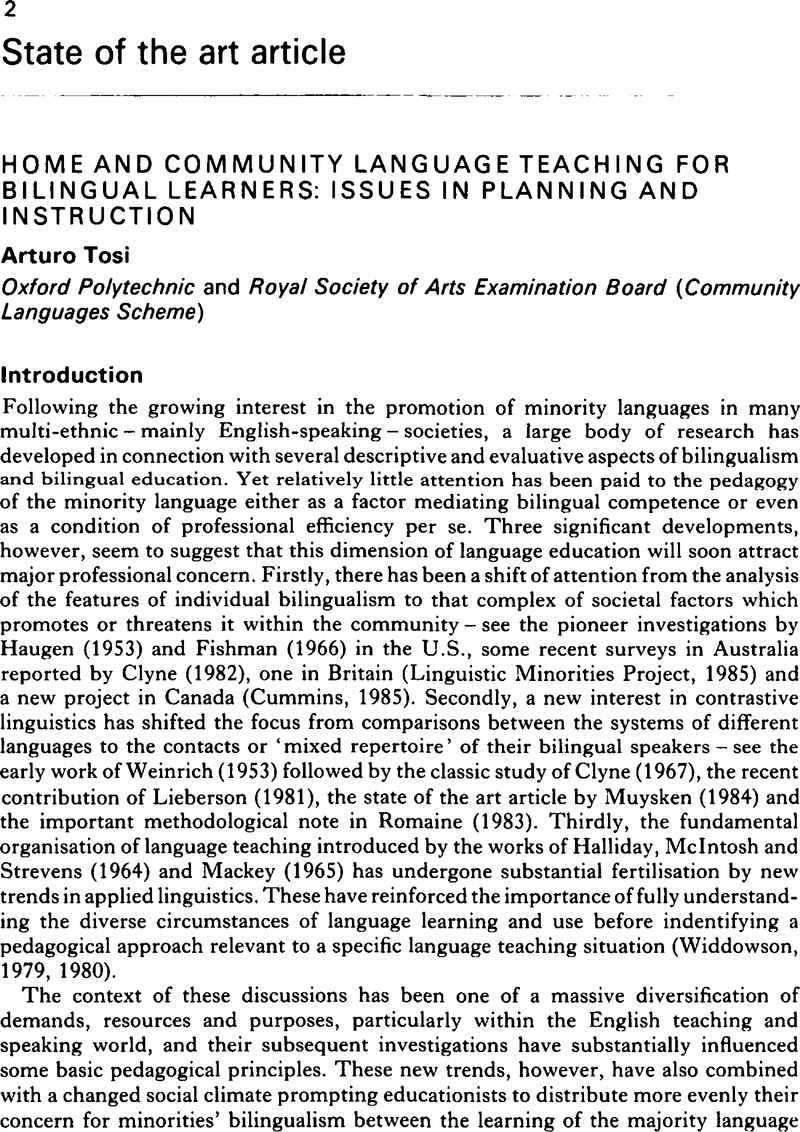Crossref Citations
This article has been cited by the following publications. This list is generated based on data provided by Crossref.
Teschner, Richard V.
1987.
Improving language learning for the non‐English‐language native speaker.
Theory Into Practice,
Vol. 26,
Issue. 4,
p.
267.
Byram, Michael
1988.
Rethinking foreign language teaching in the UK: what curriculum for a multi‐ethnic society?.
Journal of Curriculum Studies,
Vol. 20,
Issue. 3,
p.
247.
Tosi, Arturo
1989.
Bilingual Education.
Annual Review of Applied Linguistics,
Vol. 10,
Issue. ,
p.
103.
Tosi, Arturo
1989.
Neither a deficit nor an asset: Children's bilingualism in education.
Journal of Ethnic and Migration Studies,
Vol. 15,
Issue. 4,
p.
617.
Tosi, Arturo
2004.
The Language Situation in Italy.
Current Issues in Language Planning,
Vol. 5,
Issue. 3,
p.
247.
Cavallaro, Francesco
and
Serwe, Stefan Karl
2010.
Language use and language shift among the Malays in Singapore.
Applied Linguistics Review,
Vol. 1,
Issue. 2010,
p.
129.



